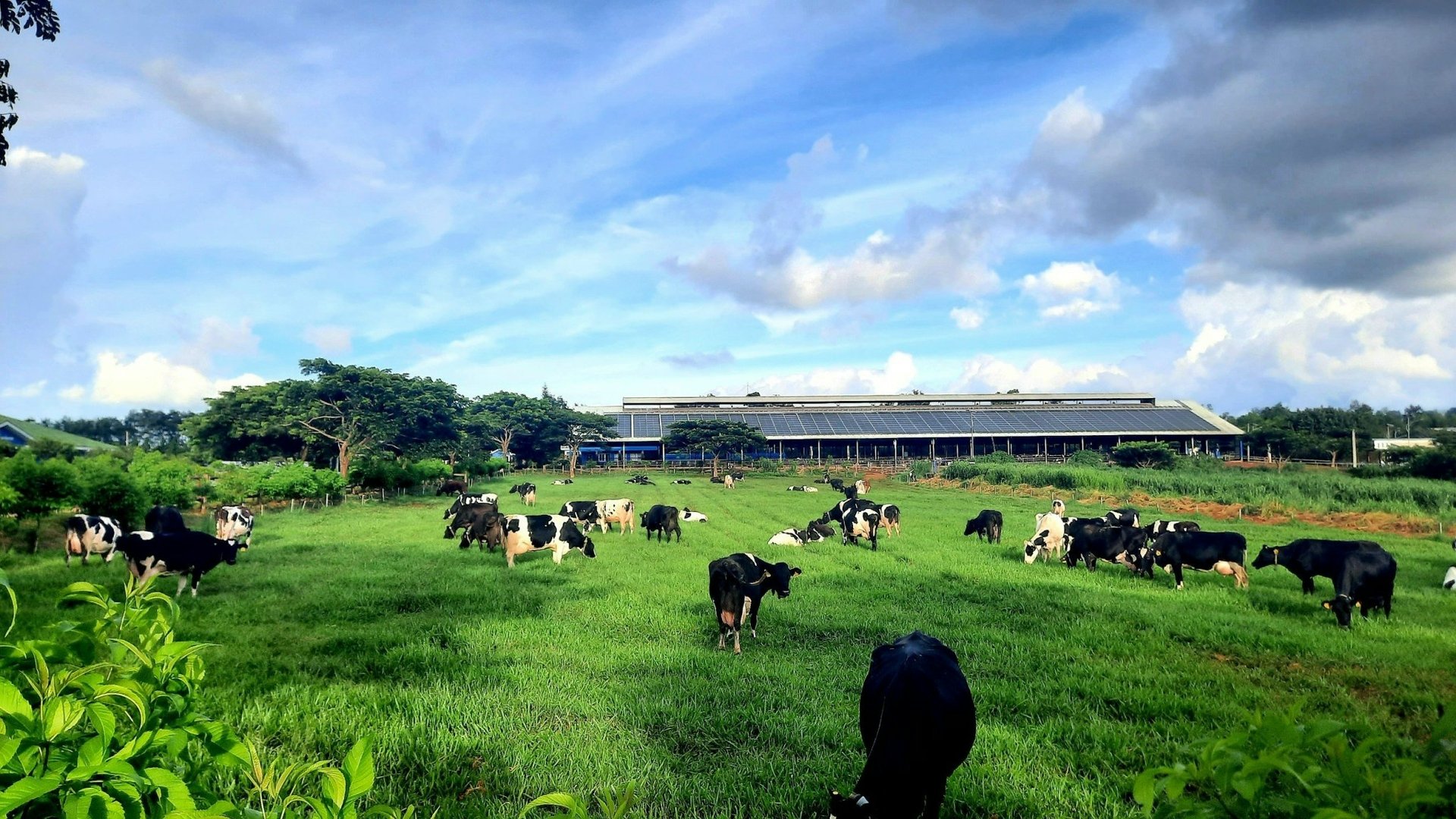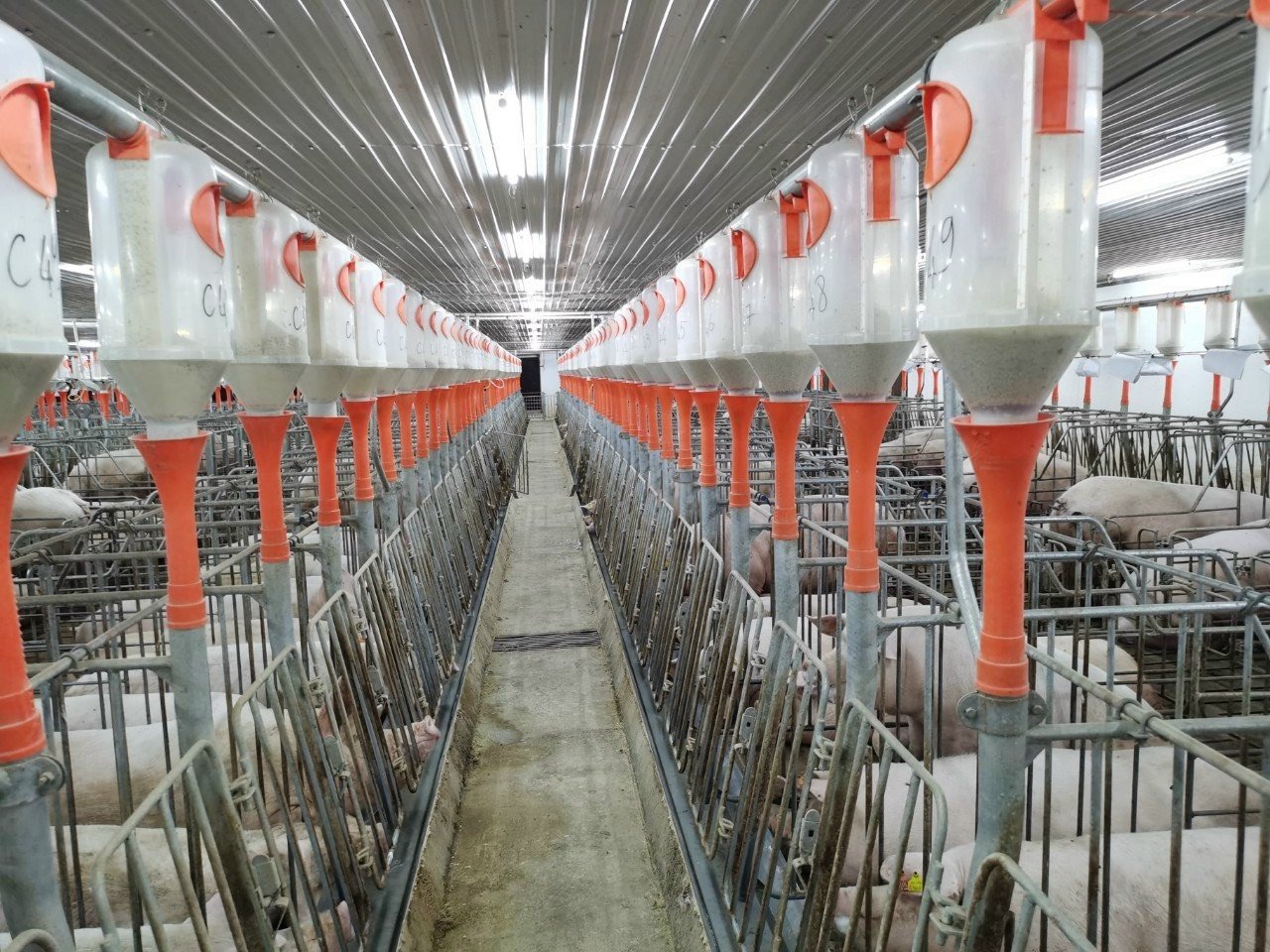November 28, 2025 | 03:35 GMT +7
November 28, 2025 | 03:35 GMT +7
Hotline: 0913.378.918
November 28, 2025 | 03:35 GMT +7
Hotline: 0913.378.918

The Central Highlands has many favorable conditions to develop concentrated livestock farming on an industrial scale associated with disease safety. Photo: Hong Tham.
The Central Highlands has a natural area of over 5.46 million hectares, of which about 2.9 million hectares are for cultivation and livestock raising.
With favorable climatic and environmental conditions and rich sources of food materials, the Central Highlands has many advantages for developing concentrated livestock farming on an industrial scale associated with building disease-free livestock areas.
The total herd of livestock and poultry in the Central Highlands provinces has continuously increased over the years. Besides, the Central Highlands has become a bright spot in attracting large livestock enterprises to invest in the past few years.
Currently, the Central Highlands has 87 livestock facilities certified as disease-free, including three pig farms, three beef farms, and four chicken farms. Products from these farms meet export standards and are accredited by the Department of Animal Health.
The remaining 77 disease-free facilities are certified by the provinces' Department of Animal Husbandry and Veterinary Medicine, serving the domestic market.
According to Mr. Vo Quoc Cuong, Deputy Director of the Department of Animal Health Region 5, biosecurity livestock areas help control epidemics and closely monitor vaccination. Dangerous infectious diseases will, therefore, be controlled.
With those benefits, the number of farms registering to build disease-safe livestock facilities in the area is increasing yearly. Before 2020, the number of disease-free facilities in the five Central Highlands provinces was very modest. Compared to the present, livestock farming in Nguyen has had positive changes.
"In the future, if there are reasonable incentive policies, the number of disease-free breeding facilities and areas will increase," Mr. Cuong said.
Another advantage of Central Highlands livestock farming is that epidemics almost only occur in small livestock farms. For example, foot-and-mouth disease only appeared in 1 outbreak in 1 livestock farming household in Gia Lai province; Avian influenza also occurred in only one livestock farming household in Kon Tum province.
Other dangerous infectious diseases are controlled primarily by cyclical conditions.
At Central Highlands, the total herd of livestock and poultry is on an uptrend, of which poultry increases by 8.62% per year and goats by 13.18% per year. These are proof of a premise for the birth of high-added value and competitiveness agro-product lines.

Disease safety will be advantageous if we can build facilities and livestock areas that ensure biosecurity. Photo: Hong Tham.
According to Deputy Minister of MARD Phung Duc Tien, the Central Highlands provinces have great potential to enhance livestock production. However, size and density still need to be higher than other regions.
The Department of Economic Cooperation and Rural Development report states that the country will have 18,340 agricultural cooperatives by the end of 2021, including 1,003 livestock cooperatives, accounting for 5.4 percent of the total. The transfer trend among livestock cooperatives between the deltas, midland, and mountainous areas has been subtle in recent years. Currently, livestock cooperatives in the delta account for 35.3 percent; midlands and the mountainous regions make for 64.7 percent of the total number of livestock cooperatives in the nation.
"The number of livestock cooperatives with effective operation is still low. With advantageous conditions of a large area for cassava and maize production of the five Central Highlands provinces, the growth of livestock cooperatives attaching to the material area is a problem that needs to be handled right now", Deputy Minister Phung Duc Tien highlighted the issue.
According to Mr. Tong Xuan Chinh, Deputy Director of the Department of Livestock Production, the Central Highlands area needs to concentrate more on livestock development investments. The site requires more animal feed mill systems. Therefore, Mr. Chinh noted that if the Central Highlands region wants to orient the development of the high-tech livestock sector, besides developing raw material regions, it is required to create facilities to process entire mixed or concentrated animal feed, etc.
The livestock industry aims to develop standards associated with the green environment, saying no to banned substances. In mid-September, the Department of Livestock Production organized a conference to implement food safety and biosecurity laws in livestock production.
One of the issues of concern is the treatment of livestock wastewater. Previously, the farming practice of most farmers was to utilize livestock waste to fertilize crops directly. This is consistent with the circular economy orientation in livestock farming because livestock wastewater is a valuable organic resource for plants.
Translated by Tuan Huy

(VAN) According to Mr. Vo Minh Thanh, Director of the Tay Ninh Department of Agriculture and Environment, Resolution 57 has created a new development pathway for the locality, shifting from traditional toward modern agriculture.
/2025/11/26/4909-2-154329_878.jpg)
(VAN) Pearl grouper farming in HDPE cages not only delivers economic efficiency but also contributes to protecting the environment, creating jobs, and promoting marine-based experiential tourism.

(VAN) The model of making a living under the forest canopy through the agroforestry system in Van Son commune, Bac Ninh province, is expected to generate an annual income of approximately VND 30 million/ha.

(VAN) Many enterprises in Can Tho are harnessing natural energy and reducing greenhouse gas emissions in their production processes, thereby contributing to the promotion of a sustainable green transition.
/2025/11/24/3536-2-112800_176.jpg)
(VAN) Dong Nai now has tens of thousands of hectares of forests certified for sustainable management, and this area will continue to be expanded in the coming period.

(VAN) Vinh Ha hamlet (Dai Xuyen commune, Hanoi) is shifting away from small-scale farming as households adopt bioscurity into their breeder chicken models.

(VAN) Heavy rains make aquatic species more vulnerable to disease. Proactive water management and high-tech systems help farmers prevent outbreaks and protect yields.